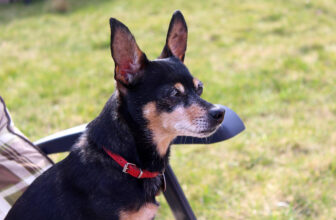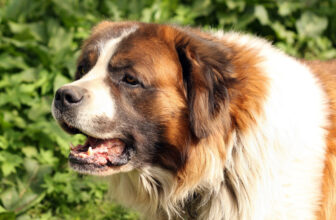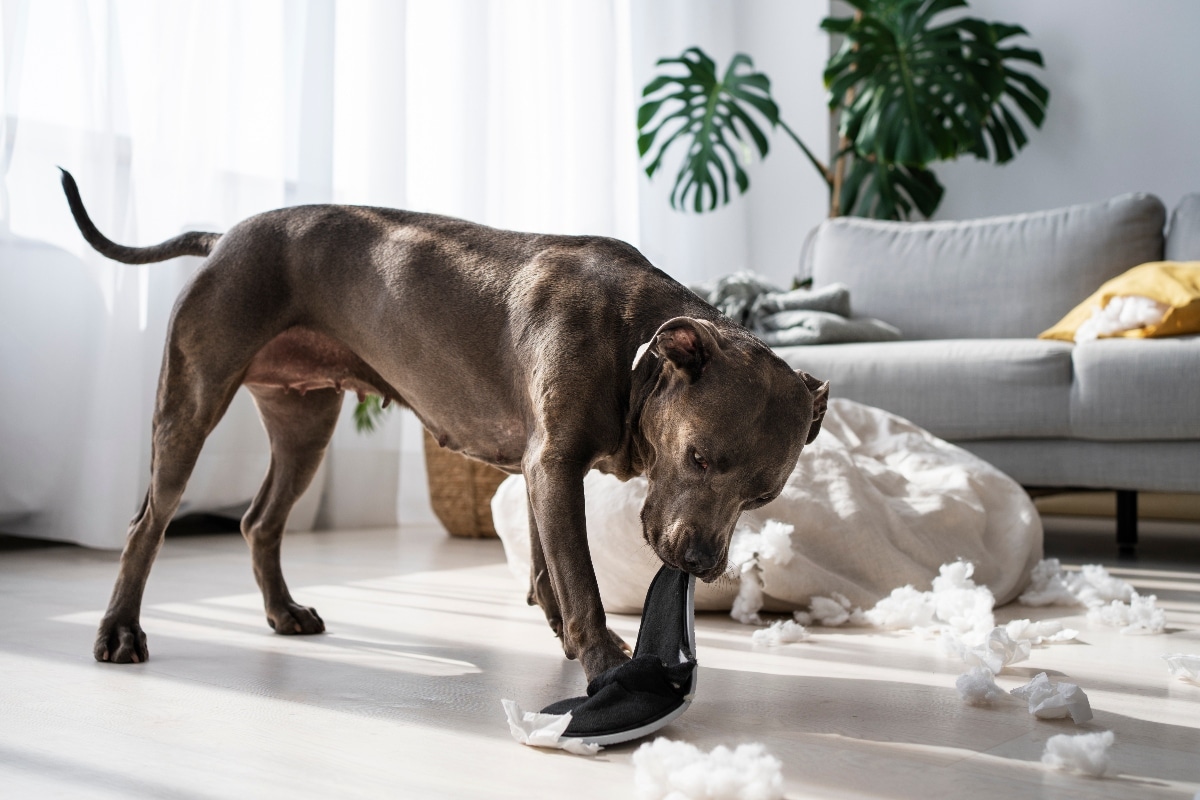
Check out our latest products
Shutterstock
Dogs are undeniably fascinating creatures. They share many traits with us, yet their behaviors often leave us scratching our heads. A wagging tail, a playful bark, or the quirky way they curl up on the couch all make us wonder, “Why do they do that?” Their instincts and emotional responses provide surprising reasons behind their actions. Understanding these behaviors helps us connect with them on a deeper level. It also allows us to appreciate the unique ways dogs express themselves, making our bond stronger and more meaningful.
They “Smile” to Show Affection

Shutterstock
Have you ever noticed your dog grinning, their lips slightly curled back, showing teeth? This is a form of communication, not aggression. Dogs often “smile” to show affection and happiness, and it’s a way of signaling that they feel safe and comfortable around you. When a dog grins or shows their teeth in a relaxed manner, it’s an indicator of trust. Unlike humans, dogs don’t smile for social reasons, but their “grins” are meant to convey that they are content and feeling positive.
Tail Wagging Doesn’t Always Mean Happiness

Shutterstock
Tail wagging is one of the most iconic behaviors in dogs, and it’s often associated with excitement or happiness. However, the speed and direction of the wagging tail can tell you a lot more about your dog’s emotions than you might think. For instance, a fast wag might indicate excitement or joy, but a slow, cautious wag could signal that your dog feels uncertain or anxious. Likewise, if the wagging is high and stiff, it can indicate dominance, while a wag held low can be a sign of submission. So, don’t assume every tail wag is a sign of happiness—there’s a deeper story being told!
They Bark to Communicate with Humans

Shutterstock
Dogs have a unique way of expressing themselves, and barking is one of their most common forms of communication. While some may think that barking is simply an instinctive reaction to stimuli, it’s a deliberate way that dogs interact with humans. Over time, dogs have learned that barking gets their humans’ attention, whether it’s for food, play, or a walk. They’ve become so attuned to human responses that they will bark in certain situations to prompt us into action, whether they’re asking for a treat or trying to tell us something is wrong.
They Roll in Stinky Things to Mask Their Scent

Shutterstock
This one may seem odd, but it makes sense in the context of a dog’s instincts. Dogs, especially those with hunting or herding backgrounds, have an instinct to mask their scent when they’re in the wild. Rolling in something unpleasant, such as a pile of mud, garbage, or even animal feces, is an ancient survival mechanism. It helps mask their scent from prey or predators, making it harder for them to be tracked. While domesticated dogs don’t need to worry about predators, this behavior persists as a remnant of their wild ancestors’ instincts.
They Steal Your Spot When You Get Up

Shutterstock
It’s a classic scenario: you get up from your seat, and your dog promptly takes your place. While this might seem like a mischievous act, it’s rooted in territorial behavior. Dogs, particularly those with a strong bond to their humans, often view their family members as part of their pack. When you leave a spot, your dog may instinctively claim it as their own, reinforcing their bond and establishing their place in the home. It’s their way of staying close to you and marking their territory in a non-aggressive way.
They Love to Dig

Shutterstock
Digging is another one of those dog behaviors that often puzzles owners. But digging is a natural behavior that serves many purposes, especially for dogs with certain instincts. For some, it’s an attempt to create a cool, comfortable spot to lie down, especially on warm days. For others, it’s a way to bury food or toys for later, much like their wild ancestors would do to hide food from scavengers. Digging can also be a response to anxiety or boredom, so if your dog is constantly digging, it might be a sign they need more physical and mental stimulation.
They Hump to Show Dominance or Relieve Stress

Shutterstock
When dogs hump, it can be a confusing behavior for pet owners. While it might seem like an inappropriate act, humping is a normal behavior for many dogs. In some cases, it’s a sign of dominance, as dogs may hump to assert their position in the pack. However, humping can also be a stress-relieving mechanism. Dogs may hump when they’re excited, overstimulated, or anxious, as it helps them release pent-up energy or anxiety. If your dog humps excessively, it may be a sign that they need more structured exercise or mental stimulation.
They “Eat Grass” for Upset Stomachs

Shutterstock
It’s not uncommon for dogs to eat grass, but it may surprise you to learn that they do it for a reason. Many dogs will eat grass when they have an upset stomach, as it can help induce vomiting and relieve discomfort. While it’s still debated among experts, some believe that grass helps dogs expel toxins from their stomach, acting as a natural remedy. However, not all grass-eating dogs vomit afterward, so it may just be a way for them to soothe their stomach when they feel off.
They Chase Their Tails to Relieve Boredom

Shutterstock
Chasing their tails might seem like a harmless and cute game, but it can be a sign of boredom or anxiety in dogs. Dogs that don’t get enough mental stimulation or exercise may resort to tail-chasing as a way to entertain themselves. This behavior can also become compulsive in some dogs, especially if they’re left alone for extended periods or don’t receive sufficient playtime. While tail-chasing is usually a playful behavior, it can become a serious behavioral issue if it becomes repetitive or obsessive.
They Love to Chew on Things

Shutterstock
Chewing is a natural and necessary behavior for dogs, especially during their teething phase. However, adult dogs continue to chew for reasons other than teething. Chewing provides dogs with a way to relieve stress, anxiety, or boredom. It’s also an instinctual behavior that helps dogs keep their teeth clean and their jaws strong. In some cases, dogs chew on objects to release pent-up energy or frustration, especially if they’re not getting enough exercise or mental stimulation. It’s essential to provide your dog with proper chew toys to help satisfy this natural need.
They Lick to Show Affection and Groom

Shutterstock
Dogs lick for various reasons, but one of the most common is to show affection. When a dog licks you, it’s often their way of expressing love and bonding with you. It’s similar to how puppies lick their mother’s face to show affection and care. Licking can also serve as a grooming behavior, as dogs will lick themselves to maintain cleanliness. Some dogs also lick because they’re stressed or anxious, so it’s essential to pay attention to the context of the licking. If your dog licks excessively, it may be a sign of an underlying issue, such as anxiety or boredom.
They Sleep in Your Bed Because They Feel Safe
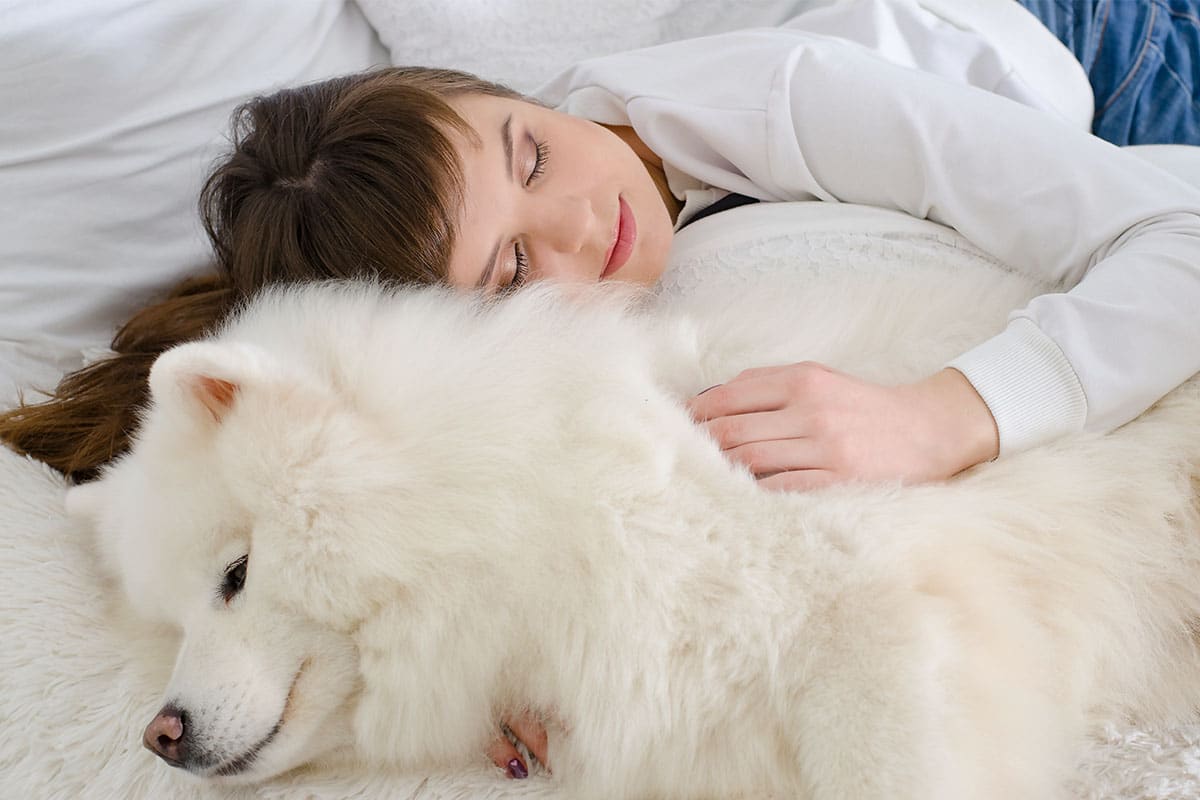
Shutterstock
If your dog sleeps in your bed, it’s not just because they want to be close to you (although that’s part of it). Dogs are pack animals, and sleeping together is a way for them to feel safe and secure within their pack. By sleeping in your bed, your dog is reinforcing its bond with you, seeing you as its protector and part of its pack. This behavior is instinctual, as wild dogs often sleep together for warmth and protection. Your bed provides a sense of comfort and security, making it the perfect spot for your dog to feel safe.
They Keep Their “Favorite” Toy Close

Shutterstock
Dogs often develop a strong attachment to certain toys, which is tied to their need for comfort and security. Much like a child might have a favorite blanket or stuffed animal, your dog may keep its favorite toy close by, carrying it around or even sleeping with it. These toys often become a source of comfort and can help reduce anxiety, particularly in dogs that experience separation anxiety. By having their favorite toy nearby, dogs feel more secure, knowing they have something familiar to hold onto during times of stress.
The Paws-itively Weird Truth
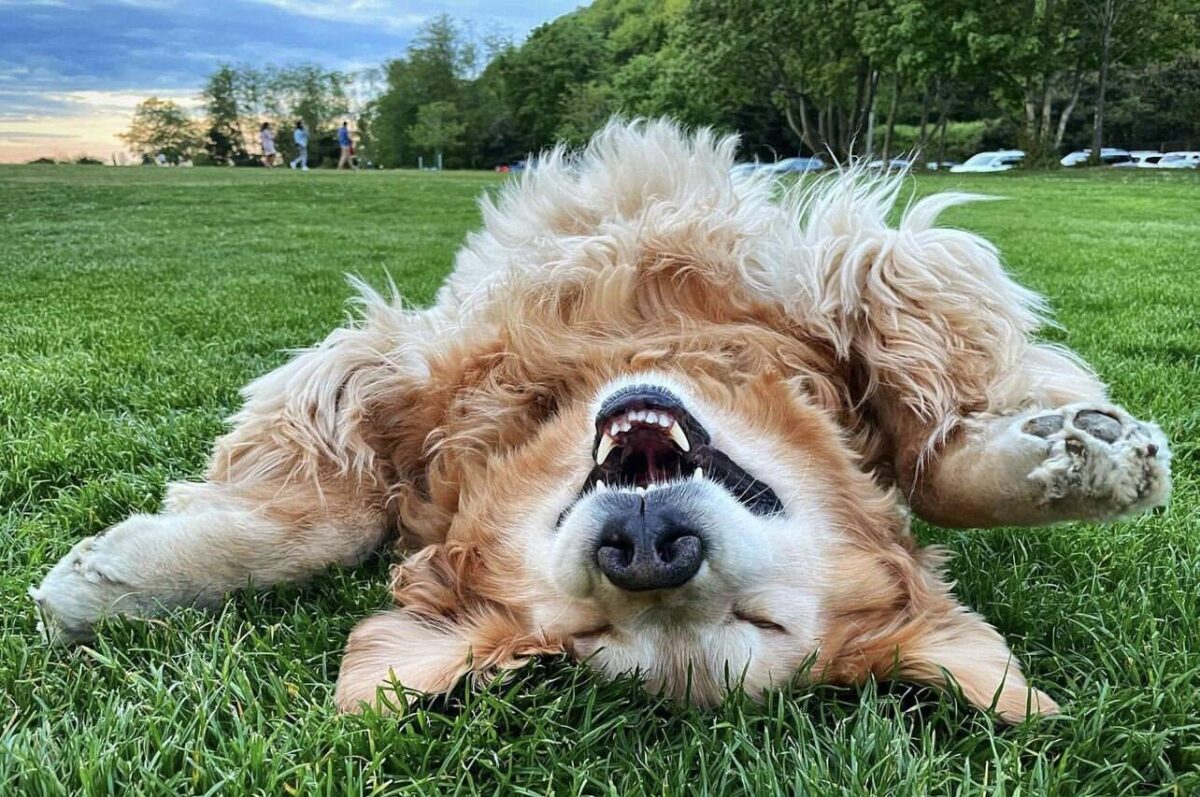
Shutterstock
Next time your dog does something strange, remember that it’s likely tied to their instincts, emotions, or learned behaviors. Dogs have a unique way of communicating with us, and understanding the reasons behind their actions helps strengthen the bond between you and your furry companion. They can steal your seat, grin at you, or give you that irresistible gaze, making you smile, laugh, and feel loved. In the end, their quirky behaviors are what make them the lovable creatures we can’t help but adore.








![[5G & 2.4G] 2K Indoor Security Camera for Home Security, AI Voice Change for 2-Way Talk, Motion Detection, Night Vision, 24/7 SD Recording/Cloud Storage, WiFi Home Camera, Pet Cam with Phone App](https://i3.wp.com/m.media-amazon.com/images/I/61I2U+sTT3L._AC_SL1500_.jpg?w=300&resize=300,300&ssl=1)




